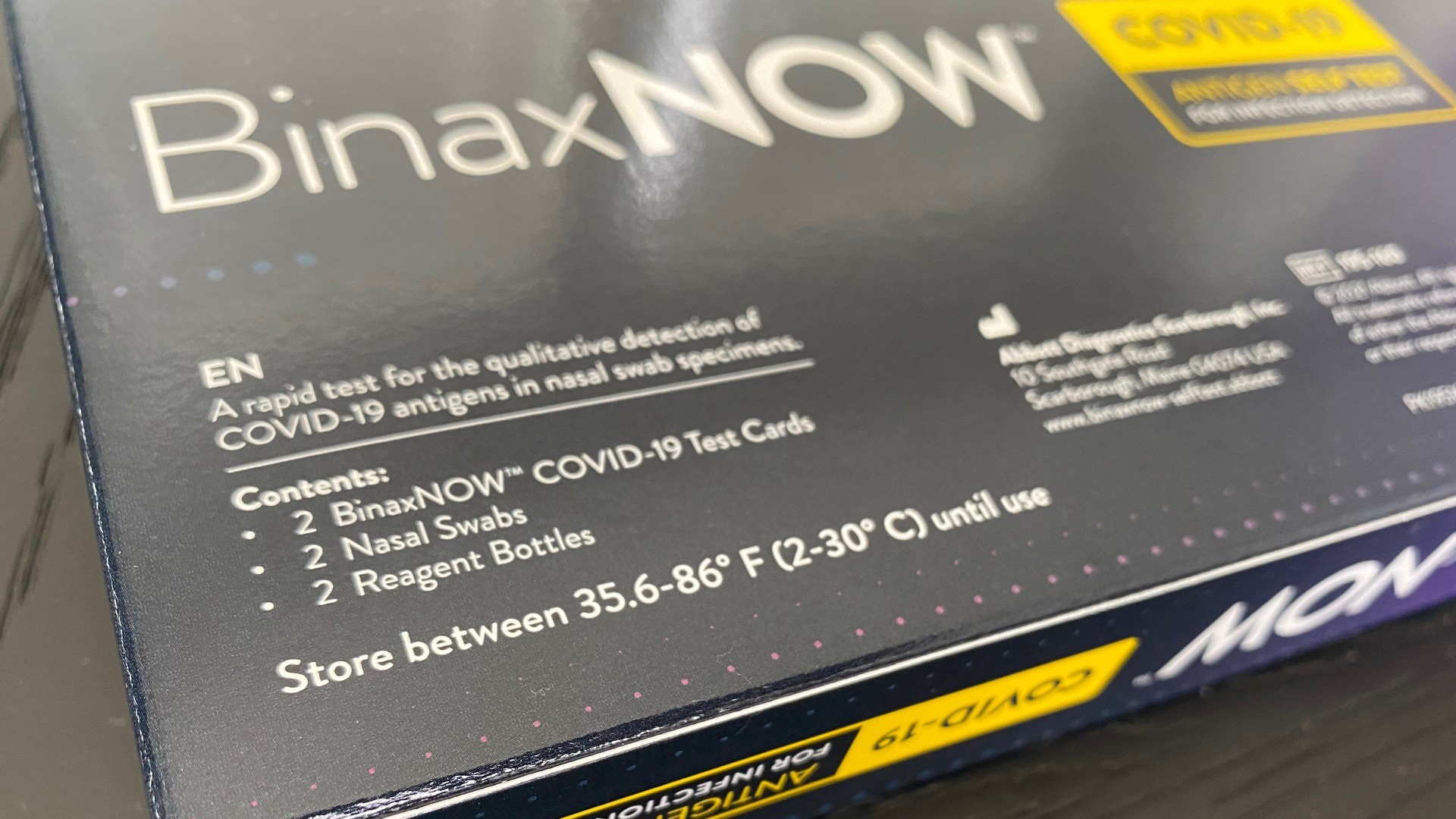COLUMBUS, Ohio — Many of us have had this shared experience in the last couple of weeks: The search for COVID test kits.
A viewer noticed a detail on the boxes of kits she recently bought about the recommended storage temperatures.
THE QUESTION
Do cold temperatures affect the results of an at-home COVID antigen test?
THE ANSWER
The answer may vary depending on the brand.
THE SOURCES
- iHealth Labs
- Abbott, the maker of the BinaxNOW antigen test kit
- Quidel, the maker of the QuickVue at-home test
- Dr. Amesh Adalja , a Senior Scholar at the Johns Hopkins Center for Health Security and an infectious disease physician
WHAT WE FOUND
According to the fine print on iHealth's website: "The manufacturer of the iHealth® COVID-19 Antigen Rapid Test requires test kits be stored at temperatures between 36 degrees and 86 degrees Farenheit (2 degrees - 30 degrees Celsius). Any extended exposure of the test kit to temperatures beyond this range may affect the quality of test results.”
A spokeswoman for Abbott writes, "For BinaxNOW, it's between 35.6 and 86 degrees F, and the test should be kept within this range. But if the test is stored outside the temperature range for a relatively short period of time – for a couple of hours up to a day or two – it will be fine to use, and it's important is that test and its components be used at room temperature."
A Quidel spokesperson writes: "The QuickVue At-Home OTC COVID-19 Test should always be stored upon receipt according to the temperature printed on the kit box (59 degrees F to 86 degrees F or 15 degrees C to 30 degrees C). Quidel has performed studies that demonstrate the product performs as expected under different temperature conditions (i.e., heated and frozen conditions) encountered during shipping."
Dr. Adalja explains why the temperature range is listed in the first place.
"It's important to remember that when a test kit gets licensed by the FDA, there's a lot of parameters that the FDA evaluates and a lot of data that the companies have to submit,” he said. “And they'll also as part of that, they'll say what temperature they started out. And there may be a number that they'll say there's a range where this was actually tested. But that doesn't necessarily mean that it's not going to work. If there was a lapse, they probably still do work.”
Have something you’d like us to verify? Send us an e-mail to verify@10TV.com.

